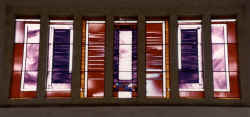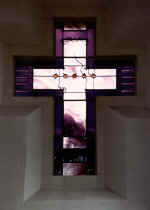The effect of the bombing on St Batholomew's Church
(Thanks to St Bartholomew's for providing the historical details and the pictures)
In 1892, a wood and corrugated iron hall was erected on plot of land between Shaftesbury Road and Junction Road. Oldfield Hall was its original name. But soon after it was built, this hall was purchased by St. Mark's at Lyncombe and renamed St. Bartholomew's. It was known locally as the Tin Church. (It was not the only "iron clad" church building. Emmanuel Church in Lower Weston was similar. Its fate in the Bath Blitz can be read by clicking here.)
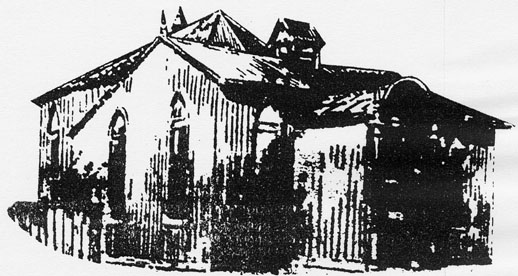
In spite of it's construction, it was able to seat 200 and was well looked after by St. Marks authorities. There was always a desire to construct a conventional church, and in 1902 the site in King Edward Road was obtained for a new building.
However, raising sufficient funds for a new building takes time, and it was not until 1936, after a huge fund raising effort topped up by a bank loan for the balance, that the foundation stone was laid. Meanwhile, the Tin Church was being used for services, a school room, Sunday School and other parochial requirements. St. Mark' s paid for the hall to be redecorated and it was given new carpets, a cross, chancel hangings and cassocks and surplices for the choir of 15.
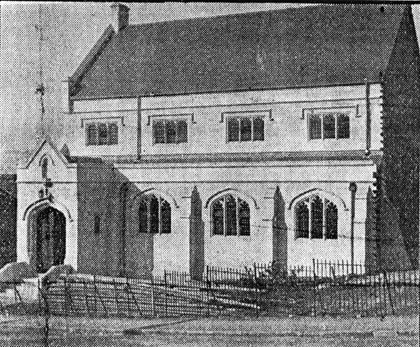
The new church, finished at last
The new church was consecrated in 1938. The Tin Church, now officially known as St Bartholomew's Hall, continued to be used as a Children's Church and Sunday School.
In 1939, repairs were carried out to the NE side of the Tin Church. Blackout curtains, stirrup pumps, ladders, sand and tin hats for fire watchers were purchased, and St Bartholomew's Hall was designated an Emergency Feeding Station.
On 15th March 1942, the last payment of the bank loan was paid, and St Bartholomew's was finally debt free.
In the early hours of the morning of 26th April 1942, a 250kg bomb (No. HE1068) struck the new church and severely damaged it. A 500kg bomb (No. HE1066) struck the house alongside the Tin Church, completely destroying the house and the Tin Church.
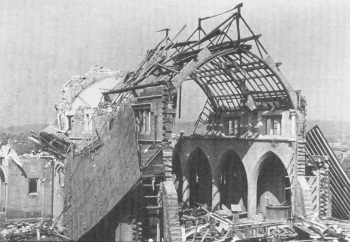
The new church after the bombing
Much of the furniture (but not the pews) survived the bomb and was put into storage
For the remainder of the war, church services were held in the ruins of the church.
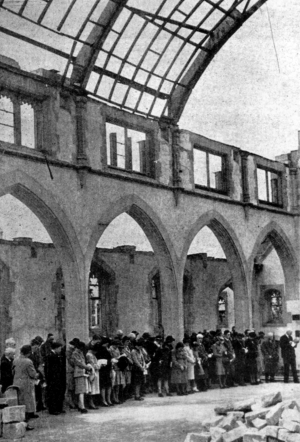
The Sunday after D Day, praying for the troops
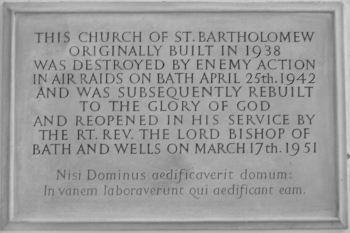 In 1949, the War Damage Committee agreed to fund repairs.
In 1949, the War Damage Committee agreed to fund repairs.
Repairs were completed sufficient for the church (with a new foundation stone) to be re-opened on March 17th 1951, the first bombed church in Bath to do so. The furniture was recovered from its storage, and replacement pews were obtained from the chapel at the Royal National Hospital for Rheumatic Diseases (which had also been bombed - Bomb No HE2155)
However, the East wall was a temporary structure made of concrete blocks (which, although temporary, was to survive for nearly 30 years).
The land on which the Tin Church had stood was sold to raise badly needed funds.
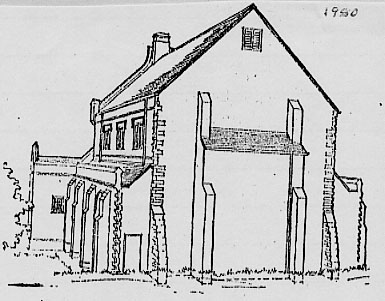
The Temporary East Wall
In 1954, a Church Hall was constructed alongside the church on the King Edward Road site, thus replacing the meeting space that was lost with the destruction of the Tin Church. 160 children attended the Sunday School in its new venue.
In 1975, the Church Commissioners offered St Batholomew's the status of Parish Church provided the East Wall was rebuilt. After the necessary fund raising, work started at the end of 1980 and completed with a service of dedication on 21st June 1981. The new wall was built in Bath stone.
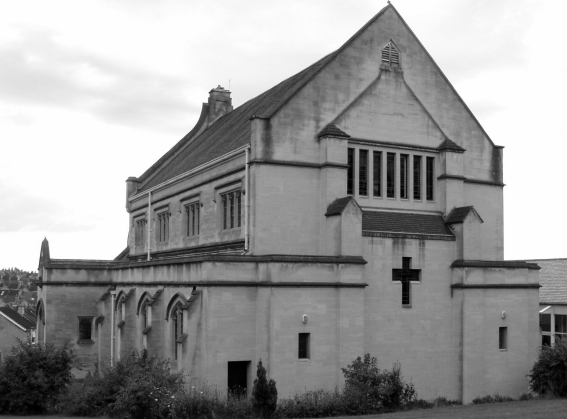
The Final East Wall
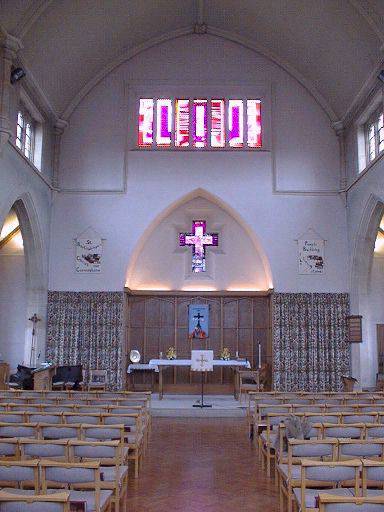
Installed in the new East Wall was the church's first stained glass
|
|
The symbolism in the stained glass is explained on St Bartholomew's web site |
|
If you can't find where you want to go next using the navigation buttons at the top of this page, this button will take you to the page containing the complete site index.

